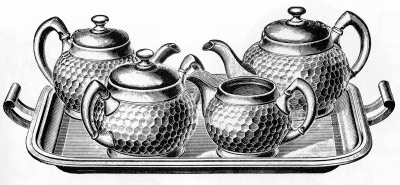Burnt cream with tea.
Hugh Acheson bakes what he in common with others seduced by conventional wisdom calls crème brulee which, however, originated in England as the name we call it infers. Acheson refers to the sweet tea tradition of the American south as his inspiration for the inspired addition of tea to the seventeenth century template but after all sweet tea itself is a descendant of the British tea tradition and, even though Acheson did not realize it, his innovation doubles down on the Angloculinary origin of the dish. A complicated and reasonably difficult recipe but a rewarding one. “You will need six ramekins.”

- 3½ cups heavy cream
- ½ cup each demerara or turbinado and granulated (white) sugar
- 2 teabags or, better, loose Tablespoons strong black tea (see the Notes)
- 7 or 8 egg yolks
Preheat the oven to 325°.
- Heat the cream and 1/4 of the combined sugars over medium high heat until it begins to steam, usually in about 4 to 8 minutes. Remove the cream from the heat.
- Steep the tea in the steamy cream for about 3 minutes, no longer; “black tea leaves will impart too much tannin if steeped for too long.”
- Remove the bags or strain off the tea leaves.
- Whisk another 1/4 of the combined sugars with the egg yolks.
- Carefully temper the cream into the sugary egg by whisking the merest Tablespoon at a time into the mix: “As long as you work slowly the egg yolks won’t scramble” and ruin the dish.
- Once a little more than half the cream has been added to the sugary egg mixture, pour on the rest of the cream and whisk the custard until amalgamated and smooth.
- Strain the custard into a bowl and shock it in an icebath.
- Skim of any foam and pour the custard into the ramekins.
- Put the ramekins in a pan filled with enough warm (not hot) water to rise halfway up the sides of the ramekins, tightly crimp a sheet of foil over the pan and and bake the burnt cream for 50 minutes.
- Check to ensure that the custard has set (see the Notes); if not, rotate the pan to encourage even cooking and give it another few minutes in the oven.
- Refrigerate the burnt cream for at least three hours.
- Sprinkle the ramekins with the remaining sugar and blast under the hottest broiler (or, in British usage, grill) setting until the sugar melts and darkens to a deep brown.
Notes:
-Acheson uses all white sugar and likes Earl Grey as well as herbal teas. A curse on them all. We like Irish or English breakfast teas or, the very best of all, Bewley’s Dublin Morning Tea with it’s “strong, stimulating flavour.”
-All quotations except for that one from the Bewley’s box are from Acheson’s New Turn in the South (New York 2011). Custards are tricky and Acheson explains how to get them right by checking that they are set at Step 10 of our recipe:
“Pull the pan slightly out of the oven, remove a corner of the aluminum foil, and carefully jiggle one ramekin. You want the custard to have set to a relative solid. When you jiggle it, the custard should shake for 1 second and then stop. If it continues to shake then it needs more oven time. If it’s not done, replace the foil, rotate the pan, and continue baking for 8 minutes, then check again and give it more time if needed until fully set. This dessert can be a little tricky if it’s your first time baking a custard, so be patient. You’ll understand the process even better the next time you make it.” (Acheson 283)
-So much is so good about the passage. The verbs (“jiggle,” “shake”) describe exactly what the nervous cook should see, and the tone both respectful and reassuring. Even a renowned television chef has the candor to admit that a recipe, however well designed, can be tricky, itself an encouraging touch.
-Do drink fortified wine with your burnt cream, in particular Madeira or Port.
